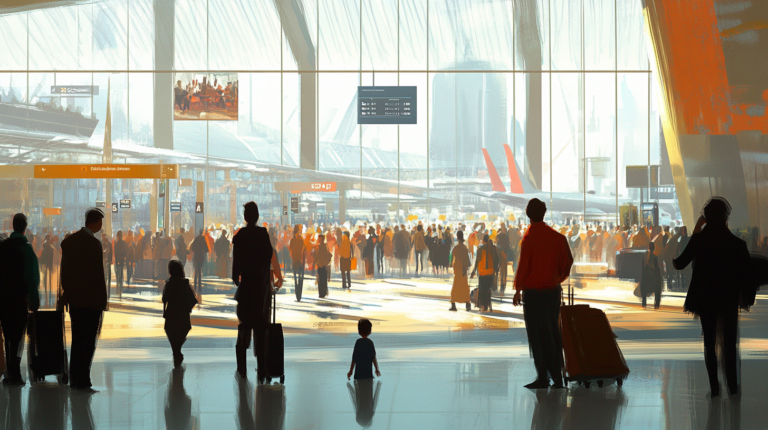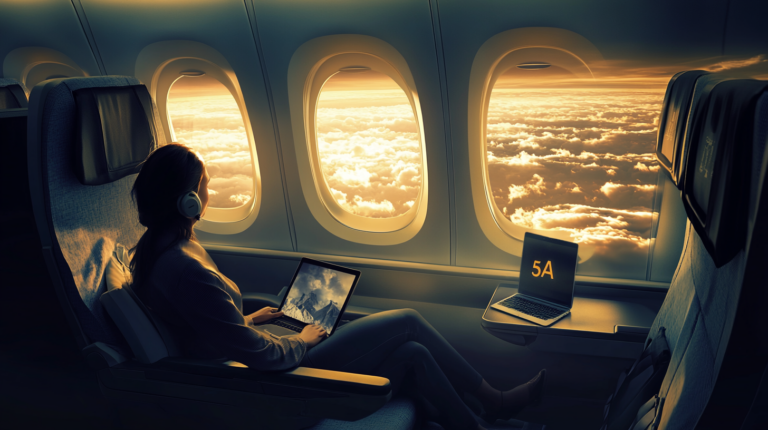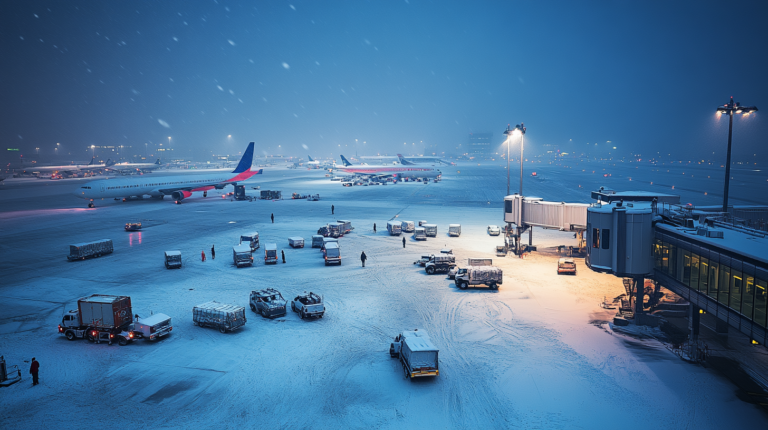Business Travel Takes Off: The 2025 Outlook

1. The Post-Pandemic Rebound

I’ve witnessed a powerful resurgence in global business travel this year, with companies eager to reinstate face-to-face connections. According to recent polls, 48% of travel buyers anticipate more trips in the coming months, while around 57% forecast increased spending. For many professionals, it’s about the ROI, networking opportunities, and maintaining strategic partnerships that have been challenging to sustain over virtual platforms.
Market projections indicate that global business travel could climb from USD 1.63 trillion in 2024 to USD 2.75 trillion by 2030, reflecting an impressive annual growth of about 8.2%. In my own experience, I’ve seen more airlines offering creative solutions to alleviate bottlenecks, such as digital check-in initiatives and targeted seat upgrades for frequent flyers. Even with persistent staffing challenges across airlines and hotels, the industry is finding new ways to keep everything running smoothly.
The key is adaptability. A recent study suggests that 70% of frequent business travelers expect more flexibility in booking changes and cancellations. I’ve personally taken advantage of these flexible policies, which not only ease the fear of last-minute alterations but also protect entire itineraries from disruption. As the rebound continues, staying agile is essential to fully harness this post-pandemic momentum.
2. Tech Innovations Taking Flight

Advanced technologies like AI, VR/AR, and next-gen digital booking platforms are revolutionizing each phase of travel. I’m especially impressed by AI-backend systems that predict flight disruptions before airlines officially announce them—saving me the trouble of scrambling for a last-minute rebooking. Virtual collaboration tools are likewise bridging gaps in time zones, letting us simulate on-site visits where in-person appointments might not be feasible.
According to industry data, more corporations are investing in secure, tech-driven solutions that help their employees remain healthy and well-connected. I’ve explored interactive augmented reality site visits that make remote facility tours remarkably vivid. These immersive experiences can actually minimize unnecessary trips, which in turn saves budgets and reduces carbon footprints. With a near-future shaped by augmented reality travel, I believe we’re only scratching the surface of what’s possible.
Another trend I’ve noticed is the rise of apps tailored to specific career fields—especially for women in STEM who are leading the charge in designing new aviation software and sophisticated communication platforms. By championing more inclusive design approaches, we’re seeing products that cater to diverse needs, like in-flight translation tools for cross-border teams. There’s an electric sense that technology is leveling the playing field, letting us all innovate together.
3. Emerging Markets in the Spotlight

Asia Pacific is still making waves, holding nearly 37.15% of the global business-travel market share. I’ve traveled extensively in the region and have seen firsthand how cutting-edge tech parks are springing up alongside new infrastructure. A recent high-profile expo in Singapore showcased how local innovators are deploying biometric solutions for streamlined hotel check-ins. As a result, entire corridors of business-centered groundwork are accelerating growth.
Africa, meanwhile, is stepping onto the stage with major infrastructure developments that could redefine how we think about travel on the continent. When I attended a tech summit in Nairobi last year, I heard so many local entrepreneurs share plans for high-speed rail and expanded air routes connecting emerging urban hubs. Their passion for progressive development exemplifies why the continent is attracting a fresh wave of corporate interest.
North America’s growth, while steady, is tempered by economic and political shifts that keep executives vigilant. Yet people here continue to seek out new ways to collaborate globally. In Europe, cautious optimism underlines travel decisions just as well. Despite uncertainties, I’ve observed a growing consensus that in-person interactions remain vital for forging long-term alliances.
4. Sustainability and Bleisure Trends

Eco-conscious travel is gaining traction at a steady pace, driven by an expanding corporate push to reduce carbon footprints. I’ve personally tried out carbon-offset programs, and seeing the immediate environmental impact reports is both gratifying and eye-opening. According to a sustainability survey conducted earlier this year, over 60% of companies plan to implement greener travel policies by 2026, signaling that eco-awareness is here to stay.
Wellness initiatives and the “bleisure” wave—where you add a leisure component to work trips—are also part of this structural shift. I’ve enjoyed tacking on a weekend of hiking or city exploration after conferences, which allows me to decompress before diving back into deadlines. Colleagues of mine say they feel more recharged and find it beneficial to incorporate personal relaxation into a professional trip, effectively reducing overall travel cycles.
In a women-in-tech event I attended, participants highlighted how flexible scheduling empowers underrepresented groups—proving that environmentally friendly and socially conscious travel approaches can go hand-in-hand. This synergy not only fosters diverse voices in corporate operations, but it also ensures we’re caring for our planet.
5. Top 3 Tech Tools for Savvy Business Travelers

- AI-Driven Itinerary Managers: These platforms provide real-time updates for flights and hotels, automatically rebooking when disruptions pop up. I’ve relied on AI alerts more times than I can count, especially during weather-induced cancellations.
- AR/VR Collaboration: Remote demos and virtual facility tours allow teams to preview sites well before a costly on-location assessment. It’s surprising how lifelike these experiences can be—some conferences are already hosting “metaverse lobby” demonstrations.
- Mobile Expense Trackers: User-friendly apps promote transparency by scanning receipts instantly. Gone are the days of rummaging through crumpled papers. Now, you can upload an invoice in seconds, speeding up reimbursement processes significantly.
By weaving these tools into my own routine, I’ve discovered that a streamlined approach to technology can magically open up pockets of time. The productivity gains from having everything at my fingertips are undeniable. As more providers refine these tools, I expect them to become almost as essential as a boarding pass.
6. Key Challenges and Future Outlook

Though COVID-19 paused many trips until 2027, the industry has rebounded more rapidly than many predicted, thanks in large part to flexible booking policies and heightened safety measures. Deloitte‘s experts note that continued innovation remains crucial, prompting many organizations to adopt hybrid work frameworks that make each trip truly count.
Recent forecasts suggest business travel spending could top USD 2.77 trillion by 2032, cementing its role as a cornerstone of global commerce. I’ve seen plenty of teams trying to navigate the challenges of rising travel expenses and unpredictable market conditions. Still, as long as we maintain a focus on sustainability, adapt to technological breakthroughs, and appreciate the evolving desires of traveling teams, the outlook remains incredibly bright.
It’s also encouraging to see more women stepping into decision-making roles, both behind the scenes and in the cockpit. With a future that’s merging travel, AI, and immersive simulations, ensuring diverse perspectives will play a key role in shaping a forward-thinking, inclusive industry.
Final Thoughts
Business travel is no longer about shuffling from one meeting to the next. It’s increasingly personal, adaptable to changing conditions, and rich with opportunities for personal growth, adventure, and connection. Whether I’m looking for the newest remote-collaboration software or carbon-offset incentives, I’m reminded that the future depends on collaboration between travelers, technology providers, and corporate stakeholders.
By placing sustainability at the forefront and harnessing cutting-edge innovations, we’re cultivating a global network of professionals that thrives on face-to-face engagement without neglecting our environmental responsibilities. The real game-changer has been our collective openness to fresh ideas—whether it’s a mobile expense tracker, a VR facility tour, or a hybrid schedule that fosters a healthier work-life balance.
My hope is that we keep pushing for accessible solutions—especially for people from historically underrepresented backgrounds—so that every journey is as equitable as it is exciting. If we continue to invest, innovate, and broaden our perspectives, the future of business travel will undoubtedly remain a vibrant and vital part of global collaboration.
Amelia Yeaher’s Take
This is a moment of intersection between innovation and heritage: blending the unchanging thrill of air travel with rapid technological leaps. I see it as an invitation to ask deeper questions about how we connect, how we evolve, and how our journeys can leave a positive mark on the world. Over the years, I’ve embraced strategies that merge the digital with the physical, and I truly believe our willingness to experiment will define how we all experience the skies going forward.
Native curiosity, grounded in the love of research and collaboration, drives me to explore unconventional paths—sometimes that means using a new AI travel tool, other times it’s championing a pilot program that supports emerging tech hubs. Ultimately, it’s about setting the stage for a more creative and inclusive adventure in the world of corporate travel.






